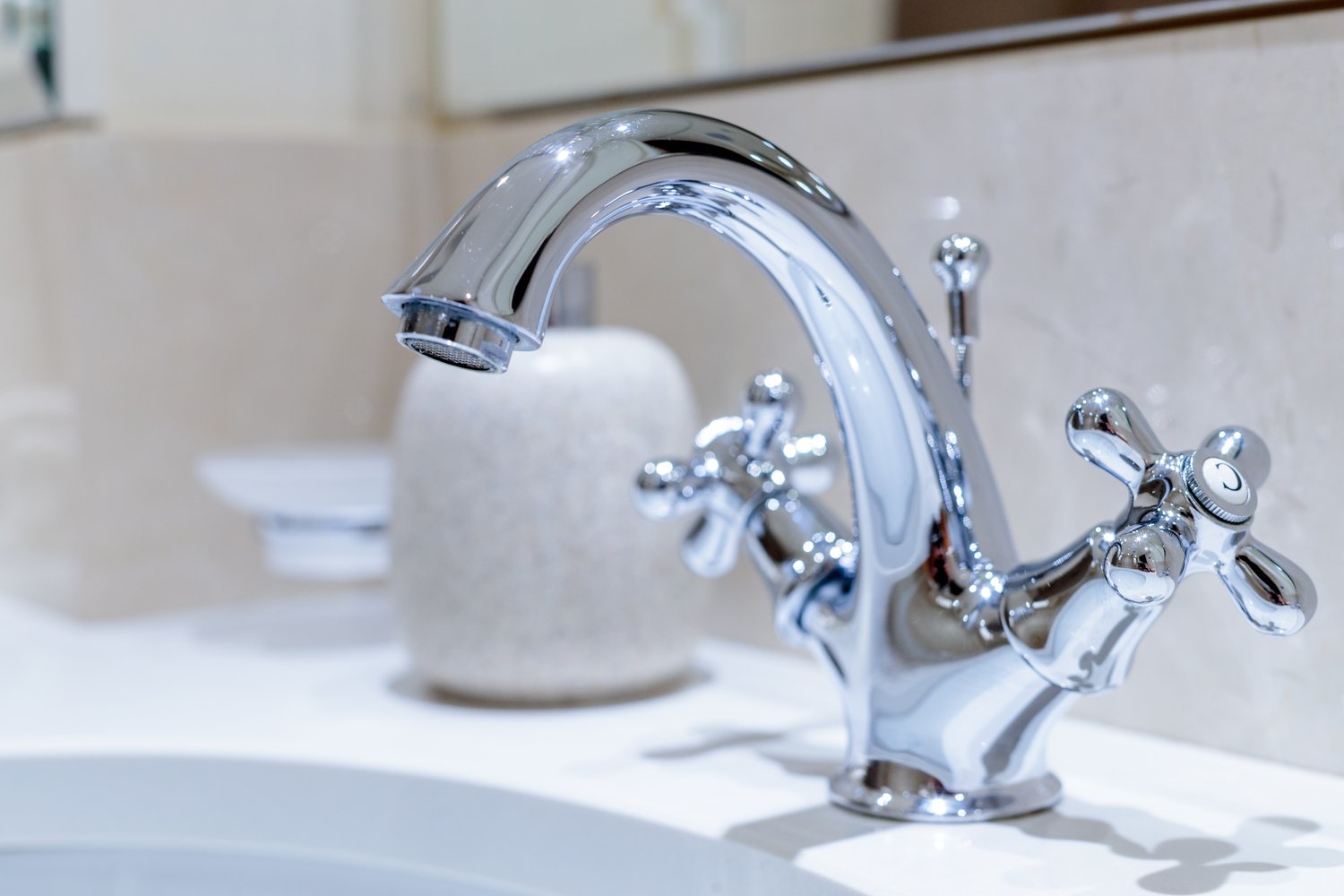Understanding bathroom faucet types
Bathroom faucets come in various styles and configurations. Single-handle faucets offer convenience, while double-handle designs provide separate control for hot and cold water. Widespread faucets feature three separate pieces: two handles and a spout. Wall-mounted faucets save counter space and create a sleek look. Waterfall faucets offer a unique aesthetic with their open-channel spouts. Each type has its advantages, and the choice depends on your bathroom’s layout and personal preferences.
Bathroom faucets https://onninen.pl/en/products/Kitchen-and-bathroom/Bathroom-equipment/Bathroom-faucets are available in various finishes, including chrome, brushed nickel, and oil-rubbed bronze. Chrome is popular for its durability and easy maintenance. Brushed nickel resists fingerprints and water spots. Oil-rubbed bronze offers a classic, antique look. The finish you choose should complement your bathroom’s overall design and other fixtures. Consider factors like durability, ease of cleaning, and resistance to corrosion when selecting a finish.
When selecting a faucet, consider the size of your sink and vanity. A large faucet may overwhelm a small sink, while a tiny faucet might look out of place on a spacious countertop. Measure the distance between the faucet holes in your sink or countertop to ensure compatibility. Standard measurements are 4 inches for centerset faucets and 8 inches for widespread models. Some faucets come with deck plates to cover unused holes in your sink or countertop.
Water efficiency is an important factor in faucet selection. Look for faucets with the WaterSense label, which indicates they meet EPA standards for water efficiency. These faucets use no more than 1.5 gallons per minute, compared to the standard 2.2 gallons. Low-flow faucets can help reduce water consumption by up to 30%, leading to significant savings on water bills. Many efficient models incorporate aerators that maintain strong water pressure while using less water.
Exploring standing washbasin faucets
Standing washbasin faucets, also known as deck-mounted faucets, are a popular choice for many bathrooms. These faucets are installed directly on the sink or countertop, providing a clean and traditional look. They come in various heights, allowing you to choose the perfect size for your sink and usage needs. Taller faucets, often called vessel faucets, are ideal for above-counter sinks, while shorter models work well with standard undermount or drop-in sinks.
Standing washbasin faucets https://onninen.pl/en/products/Kitchen-and-bathroom/Bathroom-equipment/Bathroom-faucets/Standing-washbasin-faucets offer a wide range of design options. Single-hole models have a sleek, minimalist appearance and are easy to install. Three-hole configurations allow for separate hot and cold handles, providing more precise temperature control. Some models feature a side spray for added functionality. When choosing a standing faucet, consider the number of holes in your sink or countertop and select a compatible model.
Installation of standing washbasin faucets is generally straightforward. Most models come with all necessary mounting hardware and clear instructions. However, if you’re not comfortable with plumbing work, it’s best to hire a professional. Proper installation ensures a secure fit and prevents leaks. Before installation, turn off the water supply and remove the old faucet. Clean the mounting surface thoroughly to ensure a good seal. Follow the manufacturer’s instructions carefully for the best results.
Maintenance of standing washbasin faucets is relatively simple. Regular cleaning with a mild soap and water solution helps prevent buildup of soap scum and mineral deposits. Avoid abrasive cleaners that can damage the finish. For hard water areas, consider using a vinegar solution periodically to remove mineral deposits. Check for leaks regularly and replace washers or cartridges as needed. With proper care, a quality standing washbasin faucet can last for many years.
Benefits of wall-mounted basin faucets
Wall-mounted basin faucets offer a unique and space-saving solution for bathrooms. These faucets are installed directly into the wall above the sink, freeing up valuable counter space. This design is particularly beneficial in small bathrooms or powder rooms where space is at a premium. Wall-mounted faucets create a clean, uncluttered look and make cleaning the sink area easier. They’re available in various styles, from modern to traditional, to suit any bathroom decor.
Wall-mounted basin faucets https://onninen.pl/en/products/Kitchen-and-bathroom/Bathroom-equipment/Bathroom-faucets/Wall-mounted-basin-faucets require careful planning during installation. The plumbing must be roughed-in behind the wall, which may require more extensive work than deck-mounted faucets. It’s crucial to ensure that the faucet spout extends far enough over the sink to prevent water from splashing onto the countertop. Most wall-mounted faucets have a reach of 6 to 9 inches, but it’s important to measure your sink and choose an appropriate size.
One advantage of wall-mounted faucets is their versatility in height placement. They can be installed at any height to accommodate different sink designs or user preferences. This flexibility allows for customization in bathroom design. For example, a higher placement might be preferred for vessel sinks, while a lower position could work better with a shallow basin. Consider the height of users and the sink type when determining the ideal placement for your wall-mounted faucet.
Maintenance of wall-mounted basin faucets can be more challenging than their deck-mounted counterparts. Access to the plumbing is limited, as it’s hidden behind the wall. This can make repairs more complex and potentially more expensive. However, many modern wall-mounted faucets are designed with serviceable cartridges that can be replaced from the front, simplifying maintenance. Regular cleaning and checking for leaks are still important to ensure longevity and proper function.
Choosing the right shower faucets
Shower faucets play a crucial role in your daily bathing experience. They come in various types, including single-handle, dual-handle, and thermostatic models. Single-handle shower faucets are easy to use and adjust, controlling both water flow and temperature with one lever. Dual-handle models offer separate controls for hot and cold water, allowing for more precise temperature adjustment. Thermostatic shower faucets maintain a constant water temperature, providing added safety and comfort.
Shower faucets https://onninen.pl/en/products/Kitchen-and-bathroom/Bathroom-equipment/Bathroom-faucets/Shower-faucets often come as part of a complete shower system. These systems may include a showerhead, handheld shower, body sprays, and sometimes a tub spout. When selecting a shower system, consider your bathroom’s water pressure and plumbing configuration. Some systems require higher water pressure to function properly. It’s also important to choose a system that matches your existing plumbing rough-in to avoid extensive renovations.
Water efficiency is an important consideration for shower faucets. Look for models with the WaterSense label, which use no more than 2.0 gallons per minute. These efficient faucets can help reduce water consumption without sacrificing performance. Some shower faucets feature adjustable flow rates, allowing you to customize water usage. Additionally, consider faucets with pause buttons, which allow you to temporarily stop water flow while lathering or shaving, further conserving water.
Installation of shower faucets can vary in complexity depending on the type and existing plumbing. Simple replacements of single-handle faucets are often DIY-friendly projects. However, installing new plumbing or complex shower systems typically requires professional expertise. Proper installation is crucial to prevent leaks and ensure optimal performance. When installing a new shower faucet, consider factors like the depth of your shower wall and the location of existing plumbing lines. Always follow manufacturer instructions and local building codes during installation.
Maintaining your bathroom faucets
Regular maintenance of bathroom faucets is essential for longevity and performance. Clean faucets weekly with a mild soap solution to prevent buildup of soap scum and mineral deposits. For tougher stains, a mixture of equal parts water and white vinegar can be effective. Avoid abrasive cleaners or scrubbers that can damage the faucet’s finish. After cleaning, dry the faucet with a soft cloth to prevent water spots and maintain its shine.
Check for leaks regularly by inspecting around the base of the faucet and under the sink. A small drip can waste up to 20 gallons of water per day. Most leaks are caused by worn washers or O-rings, which are relatively easy to replace. For cartridge-type faucets, replacing the entire cartridge may be necessary. Keep a small supply of replacement parts on hand for quick repairs. If you’re uncomfortable making repairs yourself, contact a professional plumber.
Hard water can be particularly damaging to faucets, causing mineral buildup that affects performance and appearance. In areas with hard water, consider installing a water softener to protect your faucets and other plumbing fixtures. Alternatively, use a vinegar solution more frequently to dissolve mineral deposits. For removable parts like aerators, soak them in vinegar overnight to remove buildup. Rinse thoroughly and reinstall to improve water flow.
Protect your faucets from extreme temperature changes, which can cause damage over time. Avoid using boiling water directly in sinks with attached faucets, as the heat can damage seals and other components. Similarly, be cautious with harsh chemicals that might corrode faucet materials. By following these maintenance tips and addressing issues promptly, you can extend the life of your bathroom faucets and maintain their functionality and appearance for years to come.





